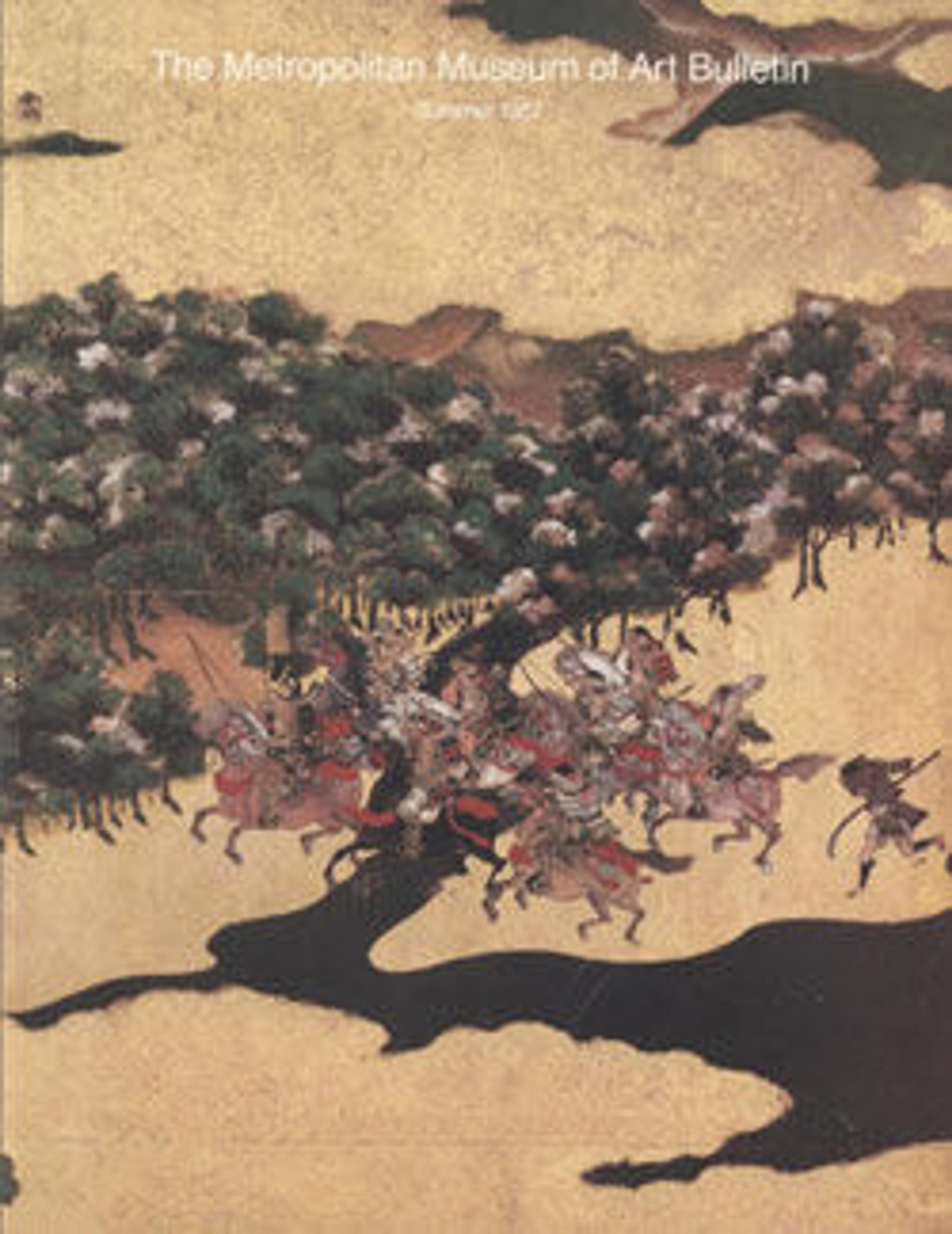Haguro Mirror (Haguro kyō) with Birds and Flowers by a Stream
Related to the Shintō notion of the mirror as an object of almost magical potency was the custom of dedicating personal mirrors to Shintō shrines. In the twelfth and thirteenth centuries hope for salvation in Buddhist Pure Land paradises merged with the Shintō notion of certain places as the abode of sacred spirits. Sutras and both Shintō and Buddhist images were buried at such sites believed to be Pure Lands. Associated with this practice was that of throwing mirrors into ponds. Hundreds of examples with bird and flower motifs, such as the lovely ferns and wildflowers seen here, have been recovered from a pond within the precincts of Dewa Shrine atop Mount Haguro in Yamagata Prefecture and are known as Haguro kyō. Their delicate motifs are typical of the art of the Heian aristocracy.
Artwork Details
- 草花鳥双流水羽黒鏡銅鏡
- Title:Haguro Mirror (Haguro kyō) with Birds and Flowers by a Stream
- Period:Heian period (794–1185)
- Date:12th century
- Culture:Japan
- Medium:Bronze
- Dimensions:Diam. 4 1/2 in. (11.4 cm); D. 1/4 in. (.6 cm)
- Classification:Mirrors
- Credit Line:The Harry G. C. Packard Collection of Asian Art, Gift of Harry G. C. Packard, and Purchase, Fletcher, Rogers, Harris Brisbane Dick, and Louis V. Bell Funds, Joseph Pulitzer Bequest, and The Annenberg Fund Inc. Gift, 1975
- Object Number:1975.268.161
- Curatorial Department: Asian Art
More Artwork
Research Resources
The Met provides unparalleled resources for research and welcomes an international community of students and scholars. The Met's Open Access API is where creators and researchers can connect to the The Met collection. Open Access data and public domain images are available for unrestricted commercial and noncommercial use without permission or fee.
To request images under copyright and other restrictions, please use this Image Request form.
Feedback
We continue to research and examine historical and cultural context for objects in The Met collection. If you have comments or questions about this object record, please contact us using the form below. The Museum looks forward to receiving your comments.
